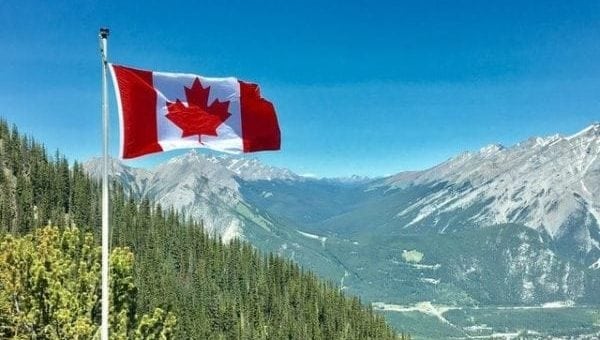 I recently attended an event that began with an announcement that “you are now on treaty land.” By now, we’re all familiar with this new way of starting public functions. It stems from a recommendation from the Truth and Reconciliation Commission (TRC). The claim is that such announcements will be a step in the direction of the reconciliation between Indigenous people and the mainstream that the TRC emphasizes.
I recently attended an event that began with an announcement that “you are now on treaty land.” By now, we’re all familiar with this new way of starting public functions. It stems from a recommendation from the Truth and Reconciliation Commission (TRC). The claim is that such announcements will be a step in the direction of the reconciliation between Indigenous people and the mainstream that the TRC emphasizes.
But this new procedure was clearly designed to signal a new way of looking at treaties and is meant to accomplish more than simply introducing a novel way of beginning an event.
With a view to gaining a better understanding of the significance of this new greeting, I listened to a CBC interview with a person who described himself as a “treaty official.” He explained that when new immigrants come to Canada, he meets with them and tells the bewildered arrivals that the country they have chosen to come to, is in fact, “treaty land,” and they will be expected to honour the treaties and “share the land.”
Clearly, a radical new way to interpret treaties was being proposed. And it’s wrong.
With the exception of Indian reserves, as defined by the Indian Act, the Prairies are not “treaty land.” The land was surrendered long ago for compensation by the Indigenous people who had hunted on it, for an agreed upon amount of compensation.
The “numbered treaties” were negotiated after the enactment of the Indian Act in 1876. In each case, negotiators sent by Ottawa met with the groups affected and reached an agreement whereby the land was surrendered to the Crown on terms that included compensation. Land was set aside for reserves.
The Indigenous people had a choice of living on a reserve, or entering the mainstream and living like any other Canadian. Hunting and similar rights were stipulated. The monetary compensation was paltry by today’s standards but $5 per person per year was a significant amount of money then. The terms were agreed to by both parties.
Today, Treaty Day is an annual celebration on First Nations communities, with $5 bills distributed by people dressed in the garb of yesterday.
The numbered treaties are straightforward documents. Although they were written in the late 19th and early 20th centuries, the language is still understandable. Anyone can access them and read them. Although people who set themselves up as treaty experts do their best to baffle with talk of the supposed complexity of the treaties, the actual meaning can be gleaned quickly.
Despite the highly fanciful interpretations people with a vested interest attempt to give to them, there really is no ambiguity on the nuts and bolts of the documents. The land was surrendered for compensation. People who purchased the land in good faith have their title free and clear. This goes for the government as well.
People who haven’t read the treaties should do so and form their own opinions.
So what’s going on? Why do these people refer to land that was surrendered more than 100 years ago as treaty land?
Because “you are now on treaty land” is part of a slick marketing campaign with clear financial goals. That campaign received a major boost from the TRC.
The catch phrase of the campaign is “share the land.” The Indigenous elite has teamed up with very expensive lawyers to promote this campaign and flood the courts with alleged breach of treaty cases. But they don’t want the treaties interpreted – they want them rewritten. And the rewriting they want is to have treaties made into laws forcing everyone to “share” land that they already own.
By itself, the phrase “share the land” sounds quite innocent. It’s good to share. And we all do share the land in the sense that we all have access to the national and provincial parks, highways and the like. But we share private land only if we want to. If I tell my neighbour I want to share his land, he’s free to show me the door. If I show up at a band office in a First Nations community and announce that I want to share the land by building a house on their property, I’ll get the same treatment.
And yet that’s exactly what the clever “share the land” campaign is all about. If the campaign is successful, regardless of whether the land is publicly or privately owned, the land will have to be surrendered or an annual rent extracted in perpetuity from the hapless owner. If this sounds a good deal like protection money, that’s because it is.
What’s as surprising as the fact that such an audacious scam should be attempted on the Canadian public is the fact that the campaign is not only being taken seriously in some quarters, it’s actually succeeding. The federal government has shown that it’s certainly not prepared to stand up to the multitude of demands from Indigenous activists, and some judges seem prepared to abandon their proper role of interpretation and do the rewriting that the activists demand.
Meanwhile, the treaties that courts have rewritten don’t solve the major issues of poverty, underemployment and lack of opportunity in First Nations communities. Instead, they exacerbate the dependency. A privileged few benefit. Mainstream Canadians – Indigenous and non-Indigenous – pay for all of this, as they watch needed resource development stalled and tax dollars misspent.
The campaign should be seen for what it is – a cash grab by attempting to rewrite history.
But perhaps the most destructive aspect of the campaign is the dependence it has spawned. Instead of directing their energies to jobs and careers, young Indigenous people are told that treaties are the answers to their many problems – the government wasn’t honouring treaties and new treaties will solve the problem.
This is nonsense, and the leaders and politicians know it. New treaties will make a privileged few richer, but will do nothing to solve problems like chronic poverty and underemployment.
The politicians and leaders are playing a cynical game.
Newcomers have come to a country that has assured them they will be treated as equals. What will they think of this treaty official’s spiel and the idea that one group of people should have rights superior to theirs simply by virtue of race?
Or maybe we don’t have to worry about them. They’ll figure it out. Many of them come from hard countries and they know a shakedown when they see one. They’re prepared to work hard to acquire what they need and they expect others to do the same.
So the next time we’re told that we’re on treaty land, maybe we should say, “No, we’re in Canada and we’re all lucky to be here.”
Brian Giesbrecht is a retired judge and a senior fellow with the Frontier Centre for Public Policy.
The views, opinions and positions expressed by columnists and contributors are the author’s alone. They do not inherently or expressly reflect the views, opinions and/or positions of our publication.


